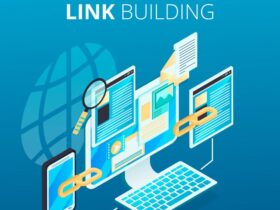When marketing your business, there are a number of potential challenges that you must overcome if you’re to succeed. These challenges also continue to evolve over time, with an estimated 96% of marketers currently concerned about the impact that fake news could have on programmatic advertising.
In the modern age, marketers must also choose the right strategies to drive their businesses forward. Link building should play an important role in helping you to achieve this objective, but even then there are different techniques that can be used to acquire links and boost your brands’ profile online.
Digital PR and traditional outreach are two of the most successful tactics, but how can they be deployed and what benefits do they offer to your business? Let’s take a look:
What is the difference between digital PR and traditional outreach?
In many ways, digital PR and traditional link building are similar. After all, they both share the same objective, while they also require the creation of relevant links if they’re to deliver successfully.
The core difference is the type of links secured, as digital PR typically targets top-tier domestic and international news sites that boast exceptionally high domain authority. In contrast, traditional outreach targets standard websites, usually those that are industry specific and are relevant to the advertisers core business proposition.
While the sites targeted through traditional outreach often have slightly lower authority, building a high volume of natural and relevant links in this manner can significantly boost your online profile and actively drive traffic to your site.
Which technique is right for you?
These subtle differences are significant, as they deliver a range of alternative benefits to meet your needs. Understanding this is crucial, which is why there’s often great value to be found in partnering with knowledgeable SEO experts.
Now, while digital PR links are less targeted than traditional outreach methods, they tend to offer far larger SEO rewards. Remember, links from resources such The Guardian, The Telegraph and Business Insider can expose your brand to high volumes of traffic, with domain thousands of subscribers and domain authorities ranging between 80 and 100.
Links from these sites have the potential to build brand awareness and drive increased traffic to your website, making it ideal for start-up ventures and companies that are simply looking to increase their online profile.

What digital PR does not always offer is a direct link to targeted customers, while traditional outreach also enables you to create industry relevant and topical links that add value to your online brand. Similarly, when targeting industry specific sites through traditional outreach methods, it’s often far easier to secure links to specific product and category pages within an organic context. As a result, customers can be diverted directly to a product page on your website, simplifying the consumer journey and optimizing conversion rates as a result.
With this in mind, traditional outreach is often the preferred technique when building links to internal website pages and promoting specific product ranges.
DIGITAL PR RISK AND REWARD
Digital PR campaigns usually require a greater investment of time than traditional link building. Campaigns are formulated in advance, often running over a number of months. The campaigns require research to help prize out and identify news angles, with a press release prepared for the targets to summarize the story that has been compiled, as well as a purpose-built landing page. This is the linkable asset and is used to house the campaign on-site, along with additional assets such as graphics and even video content to supplement them.
There’s also some limitations; campaigns for PR link acquisition often don’t offer the direct line to consumer and it’s more risk and reward.
So, while Digital PR may not always necessarily offer that direct line between potential consumers and some of your key product pages, it’s somewhat of a longer- term investment in your SEO objectives. It allows for the opportunity to have a greater positive effect on ranking and traffic, which naturally will positively affect your site’s domain authority, and thus your rankings.
To conclude, both techniques are very different, but if successfully employed can help achieve your SEO goals. Ultimately by acquiring good backlinks, your site will gain benefits in the shape of improved domain authority, increased traffic, brand visibility, which will then have the crucial effect of improving your rankings, which then in turn will drive potential customers to your site.












Leave a Reply